This article explores the AI-powered trends shaping the future of web design and highlights the importance of a user-centric approach.
The doorway to any brand or business is its website. As technology evolves, so does the landscape of web design, continually morphing to deliver better user experiences and to align with emerging digital aesthetics.
At the forefront of these evolutions are AI-powered and user-centric web design trends, which are not only changing the way websites look but also how they function.
AI-powered trends shaping web design
The infusion of AI in web design is like a ripple effect, starting from the core processes and including the aesthetics and user interactions on the web pages.
Let’s explore how AI is redefining the paradigms of web design:
Optimisation and automation with AI
AI's ability to optimise and automate processes is a game-changer in the web design sphere. It's easy to get caught up in the hype surrounding AI, but when used correctly, it can significantly improve efficiency. AI isn't just a tool for the future; it's a valuable resource today.
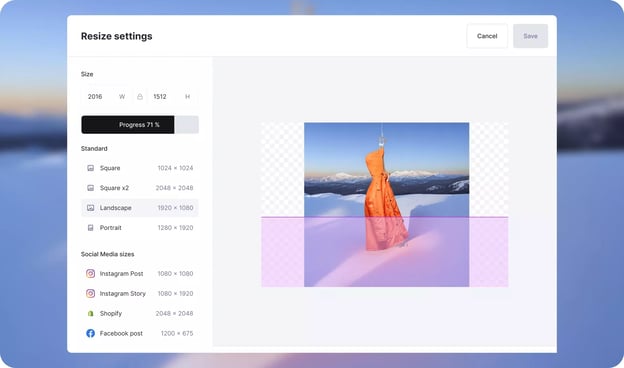
Image source: Claid.ai
Imagine having AI-powered assistants that can handle repetitive tasks, such as resizing images or formatting content. With AI taking care of these routine chores, designers and developers can focus their time and energy on more creative and strategic aspects of their work.
Generative AI for rapid conceptualisation
One of the most significant advantages of AI is its ability to streamline workflows throughout the web design process. From initial strategy and planning to the final development stages, AI-powered tools can be invaluable companions.
Generating concepts and copy is a prime example of how AI can accelerate decision-making. Generative AI can quickly provide designers and content creators with multiple options to choose from.
This not only saves time but also allows for the rapid validation of design and content decisions.
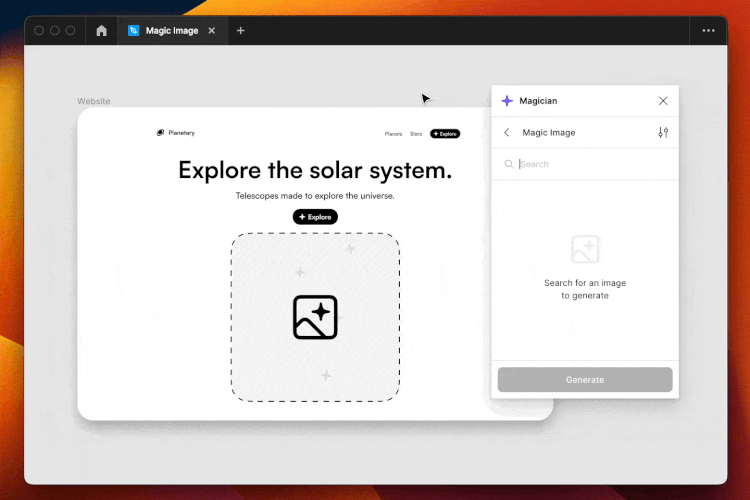
Image source: Magician
Additionally, AI can assist in creating visuals that align seamlessly with a brand's identity. Whether it's generating custom illustrations, suggesting bold typography, bright colour combinations, or creating visual assets, AI empowers designers to maintain brand consistency effortlessly.
The blend of human creativity and AI’s capability to quickly generate and validate design elements significantly accelerates the design process, allowing for more time to be spent on refining and perfecting the design.
Enhanced collaboration
The design process is often a collaborative endeavour that involves multiple stakeholders. AI-powered tools are emerging as facilitators for seamless and asynchronous collaboration among design teams.
- Real-time feedback: Tools powered by AI can provide real-time feedback, making the collaborative process more dynamic and productive.
- Design tools integration: AI can also help integrate various design tools used by different team members, creating a cohesive workflow that enhances the design process.
With AI, the barriers to effective collaboration are significantly reduced, paving the way for more harmonious and productive design teamwork.
User testing and insights
In the age of AI, data is more accessible and insightful than ever before. Designers can use AI-driven analytics tools to gain a deeper understanding of user behaviour and preferences.
This data-driven approach ensures that design decisions are based on concrete insights rather than guesswork.
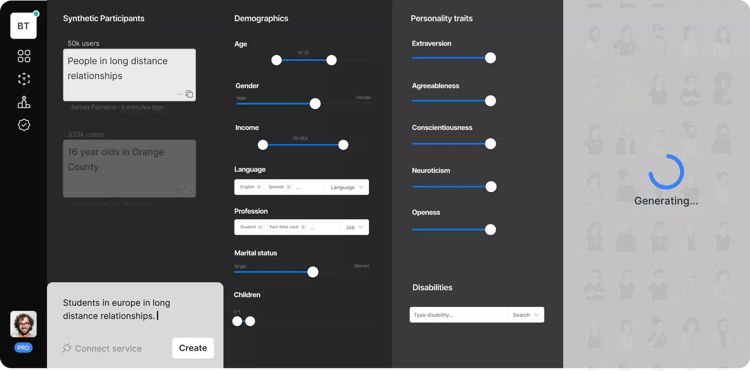
Image source: Synthetic users
User testing is another area where AI shines. Tools like 'Synthetic users' and 'Maze' allow designers to simulate user interactions and gather valuable feedback.
By testing various design directions with AI-powered simulations, designers can refine their creations and deliver websites that are more user-friendly.
The insights garnered through AI-driven user testing are invaluable in refining design strategies, ensuring that the final design not only looks good but performs well in terms of user engagement and satisfaction.
Maintaining a balanced approach
It's important to note that while AI is a powerful ally in web design, it remains a tool. It still requires individuals who can think critically and make informed decisions to achieve the optimal outcome.
The synergy of AI's capabilities with human creativity and critical thinking is where the magic truly happens in modern web design.
Additionally, the core of design thinking should always revolve around the client's business goals and the users’ needs.
While AI can significantly boost efficiency and provide new avenues for creativity, the human touch in understanding client requirements, user behaviours, and crafting designs that tell a brand's story is irreplaceable.
User-centric web design trends
User satisfaction is a prime indicator of a website's success, so adopting a user-centric approach in web design is critical.
This segment explores the essence of user-centric web design trends and how they contribute to creating more accessible, usable, and engaging digital spaces.
Accessibility and usability
Accessibility and usability are at the core of a user-centric web design process. At Huble, we understand that a user-centred approach is not just a nice-to-have; it's a competitive advantage for businesses.
By ensuring that websites are accessible to everyone, you can tap into a broader audience and make a positive impact.
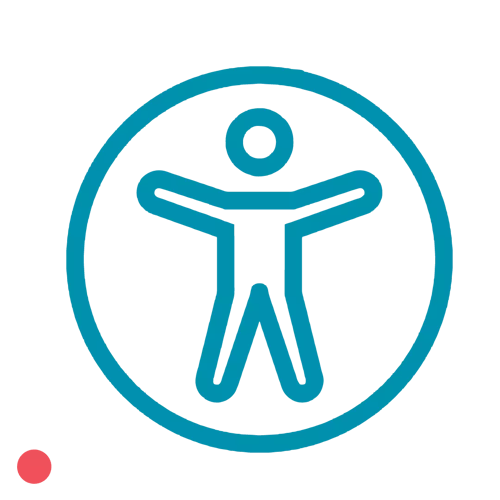
Some accessibility considerations for web design include:
- Designing for all: Adopting a design that caters to all users, irrespective of their abilities or disabilities, is a hallmark of user-centric design. It's about creating an inclusive digital environment where everyone can have a seamless experience.
- Usability heuristics: Applying heuristics like consistency, error prevention, and feedback in design helps in enhancing the overall user satisfaction and usability of the website.
- Navigation menus: Intuitive navigation menus, clear visual hierarchy, and easily accessible call-to-action buttons are crucial for a user-friendly design.
Interactive storytelling through micro-interactions
User experience (UX) is not just about functionality; it's also about delighting users with thoughtful design elements. Create websites where the experience unfolds through clever visual storytelling techniques, such as micro-interactions and animations that engage but don’t distract.
Micro-interactions, those subtle micro-animations that respond to user actions, add depth and interactivity to web pages. They provide feedback, guide users, and make the overall experience more engaging.

Implementing scroll-triggered animations can create a captivating storytelling effect, guiding users through the content in an interactive manner.
In addition to micro-interactions, website speed is a critical factor in user-centric design. Users expect websites to load quickly, and any delays can lead to frustration and high bounce rates. We optimise our websites to ensure they load swiftly, providing a seamless browsing experience.
Personalised website experience
Personalisation is the future of web design. Each user is unique, and tailoring the website experience to their preferences can have a significant impact.
Personalisation can encompass various aspects, such as displaying content relevant to the user's interests, recommending products, or customising the user interface based on past interactions.
By leveraging AI-driven algorithms, we can collect and analyse user behaviour data to deliver personalised experiences and content. This not only enhances user engagement but also boosts conversion rates.
David Benyon, a professor with over 25 years of experience in human-computer interaction, emphasises the value of a human-centred approach, stating:
“Being human-centred is an additional cost to any project, so businesses rightly ask whether taking so much time to talk to people, produce prototype designs and so on is worthwhile. The answer is a fundamental ‘yes’.”
Your partner in trend-adapt web design
The fusion of AI-powered and user-centric web design trends is redefining the digital landscape, paving the way for more intuitive, engaging, and accessible websites.
As we navigate through the intricacies of modern web design, aligning with these trends can significantly elevate a brand's online presence, ensuring not just a visually appealing website but one that resonates with and serves the end-users efficiently.
At Huble, we are dedicated to embracing these constantly evolving trends to deliver cutting-edge web design solutions. Our creative consultancy services are tailored to help you design a website that's in line with the latest web design trends, ensuring a perfect blend of aesthetic appeal, user-friendliness, and functionality.
Our team of seasoned designers and strategists are poised to guide you through every step of the design process, from conceptualisation to execution, with a keen focus on achieving your business goals and ensuring user satisfaction.
Ready to embark on a transformative web design journey? Speak with our experts to explore how we can bring your web design vision to life, keeping you ahead in the digital curve.
%20(24).png)







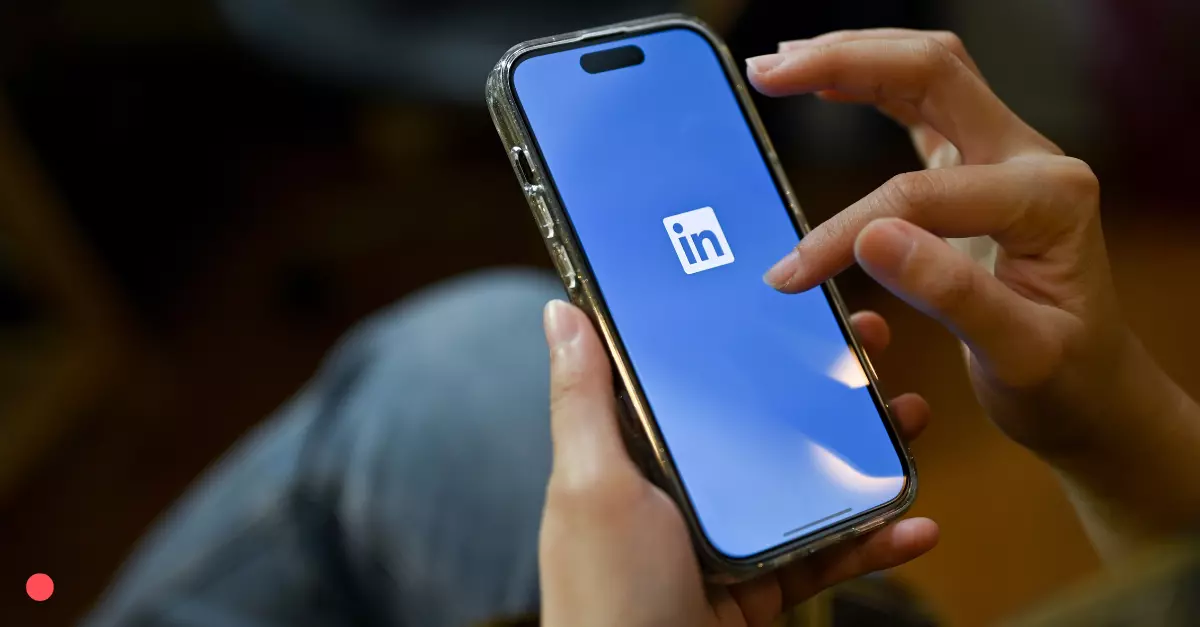

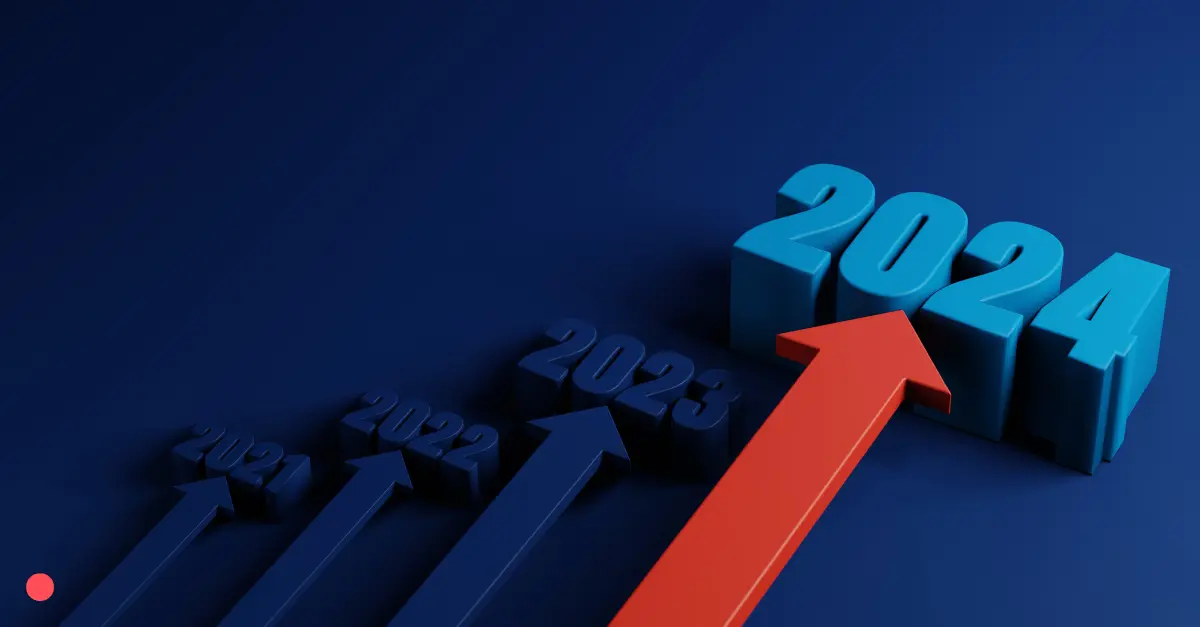

.png)





